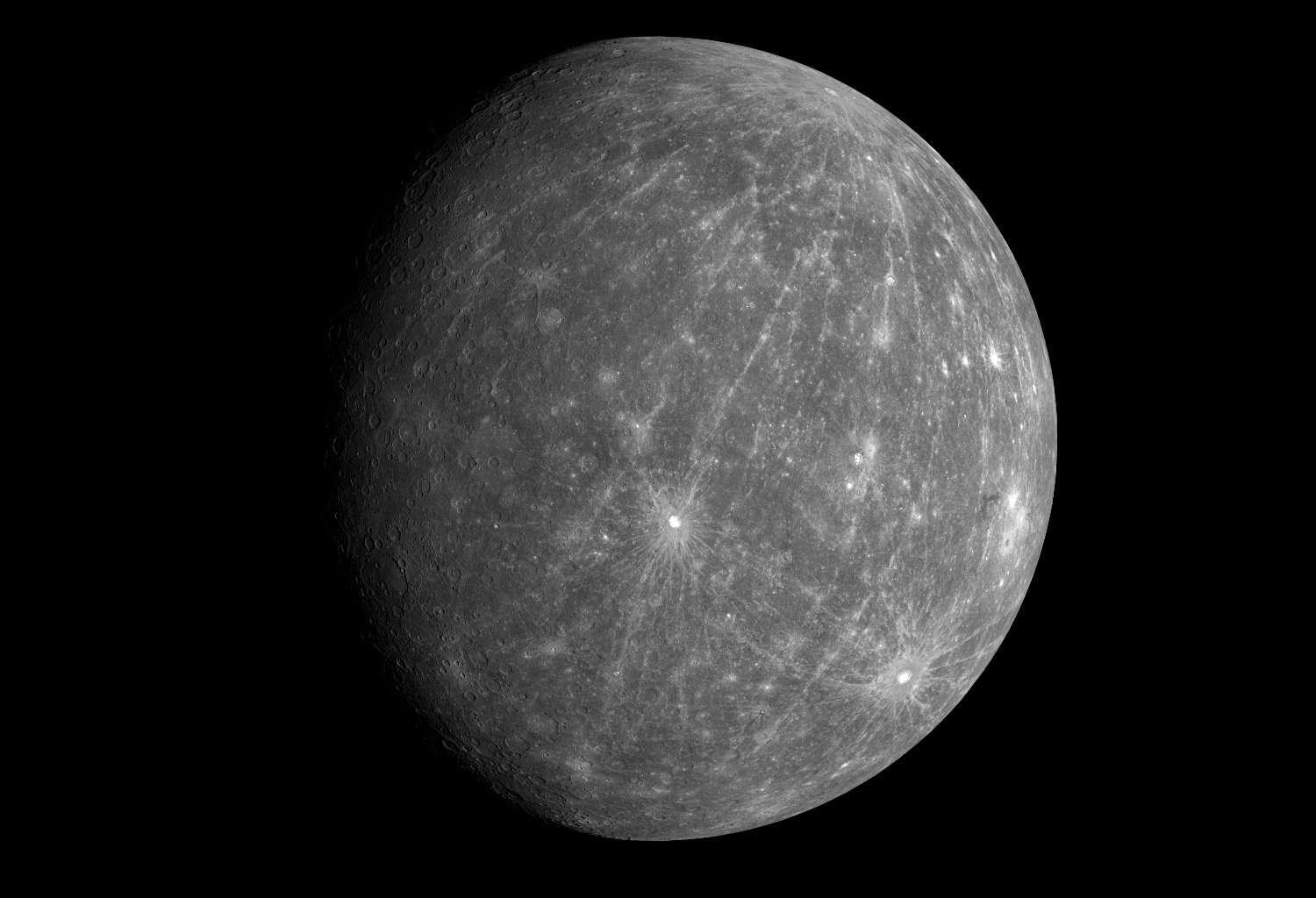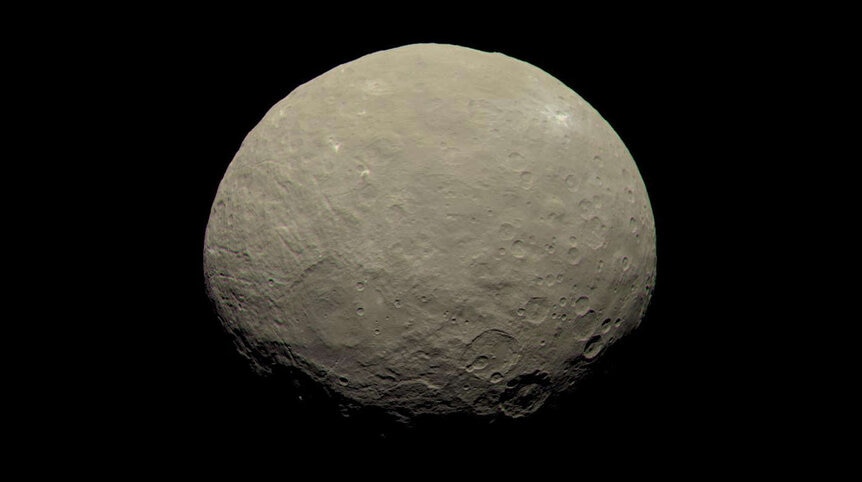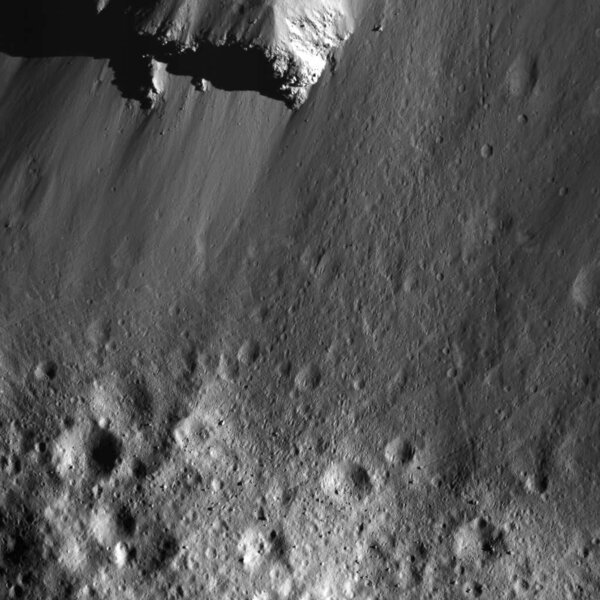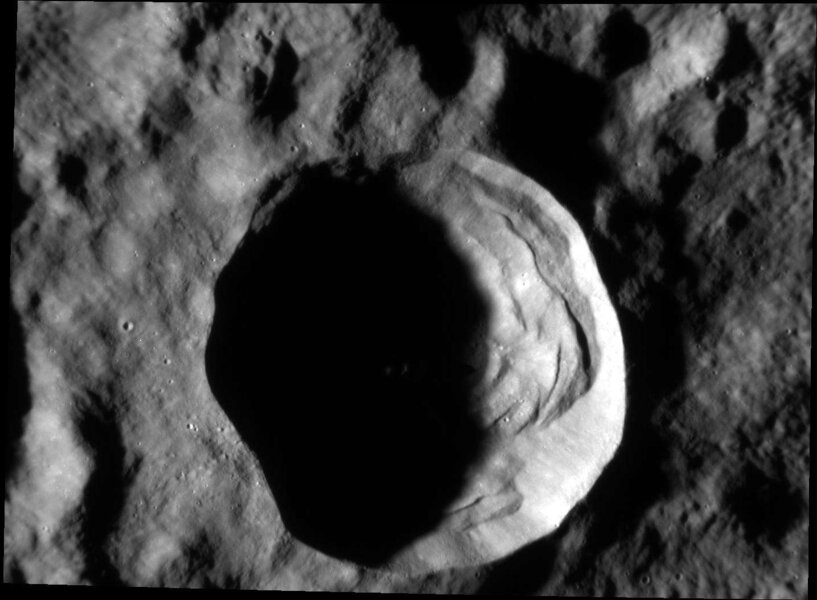Create a free profile to get unlimited access to exclusive videos, sweepstakes, and more!
Counting boulders on tiny worlds tells us how ancient and fragile they are

Astronomy rocks!
Well, planetary science rocks. Literally.
Let’s explore two small worlds, each similar yet wildly different to the other, but both with a bolder tale to tell. Or a boulder one.
We’ll start with Ceres, the largest object in the main asteroid belt between Mars and Jupiter, and so big it was well on its way to becoming a true planet before it ran out of building material billions of years ago. For that reason, scientists call it a protoplanet.
The Dawn spacecraft entered orbit around Ceres in March 2015, and though the mission ended in 2017, it remains there to this day. During those two years it extensively mapped the surface of the small world — a slightly oblate spheroid 964 x 964 x 892 kilometers in size — and found wonders to behold: Huge craters, an enormous singular cryovolcano, and evidence that the interior may hold a briny ocean of liquid water.
It also found boulders. A lot of them. Using Dawn imagery from low orbit, a team of scientists found 4,423 boulders on the surface of Ceres larger than about 100 meters across. That’s a lot of rocks.
Big rocks. Football-field-sized ones, at least. And all of them are associated with impact craters nearby, meaning they were ejected when some smaller asteroid slammed into Ceres. They found that higher latitudes (places closer to the poles) have more boulders than places near the equator, which is a little weird.
They compared the rocks they found on Ceres to those on Vesta, the second largest protoplanet in the asteroid belt and also visited by Dawn, and found that on average Ceres craters have more boulders than Vesta, and that the Ceres boulders degraded faster than ones on Vesta (about 150 million years versus 300 million for Vesta).
It turns out there are two reasons for this: One is that Ceres has a lot of carbon and water ice in its crust (recently supported by analysis of more Dawn data), making the surface weaker than on Vesta, which is rockier. That makes the boulders more fragile, so they weather more rapidly. There’s no air there, but rocks can degrade due to micrometeorite impacts and via thermal stress — the change in temperature between day and night expands and contracts rocks, eventually breaking them down.
That’s why more boulders were found near the poles, too: The change in temperature is less there, so the rocks aren’t as stressed.
So that’s all pretty nifty. It’s amazing what you can learn about a world by counting its rocks.
… which brings me to world number two, in this case, Mercury. Not long after the Ceres paper came out, another one was published by an entirely different team of scientists who used MESSENGER spacecraft imagery of Mercury to count boulders, too! Science is weird that way sometimes.
MESSENGER orbited Mercury for four years, and in its last year dropped into a very low orbit, eventually crashing into the planet. But during that time it took very high-resolution images of the surface, and this second team used those data to examine the boulders.
Like Ceres, they found that boulders were associated with craters, the major source of surface destruction (as opposed to Earth, where you might expect them from wind and water erosion of mountains). They also compared the numbers of boulders on the surface to that of the Moon — our satellite is an airless body with sizeable gravity, so they’re similar in that way. But what they found was a striking difference: Boulders on Mercury were something like 1/30th as prevalent as on the Moon.
Why is that? To understand that we need to look at weathering once again. Mercury is pretty close to the Sun, on average about 58 million km (about a third the distance of Earth to the Sun). So, unsurprisingly, it gets hot there. But it also gets extremely cold at night, so the thermal stress on rocks is extremely high. That means weathering is higher, about 2.5 times more than on the Moon, so rocks break down faster.
Also, there are a lot more micrometeorites hitting Mercury due to its proximity to the Sun. Not only that, they impact at much higher speeds; orbital speeds that close to the Sun are much higher than at the Moon. This too means weathering is higher on Mercury; the top few dozen centimeters of any rock are likely to degrade rapidly (on a geologic timescale), turning to dust.
That dust, called regolith, may also blanket the planet to a decent depth. If so, then smallish asteroid impacts — say, by ones a few tens of meters across — are less likely to create and eject boulders, because the blow is softened somewhat by the thick regolith.
So there are fewer boulders made on Mercury, and if they do get created they wear away more quickly. Tough place to be.
The authors note that the image quality in that low orbit isn’t the best for various reasons, but also note that in late 2025 the European mission BepiColumbo will enter orbit around the solar system’s smallest planet, and hopefully better data will become available then.
I hope so. Still, it’s funny what you can learn by counting rocks.
Also funny… My opening line above made me think about something I still boggle at every now and again: Not too long ago, studying Ceres and Mercury would’ve been called astronomy, but now it’s planetary science. The difference? Years ago, we studied both from afar with telescopes, so they were astronomy. But now, while we do still use telescopes, we’ve also been there. Those aren’t just lights in the sky, those are worlds, places we’ve visited via our robotic proxies.
Sure, counting rocks may not sound all that glamorous, but the underlying meaning — been there, doing that — is very, very cool.






























